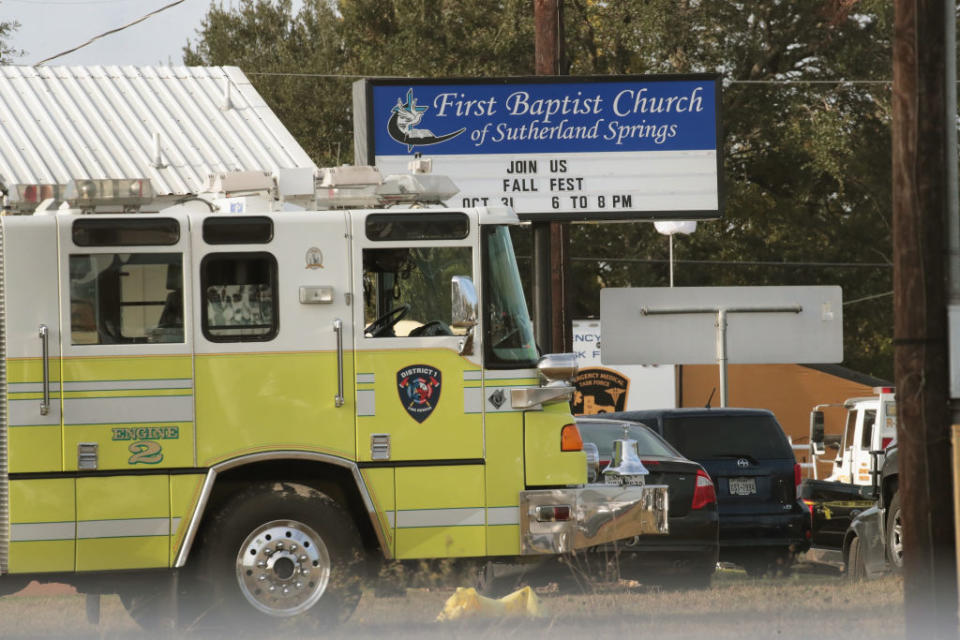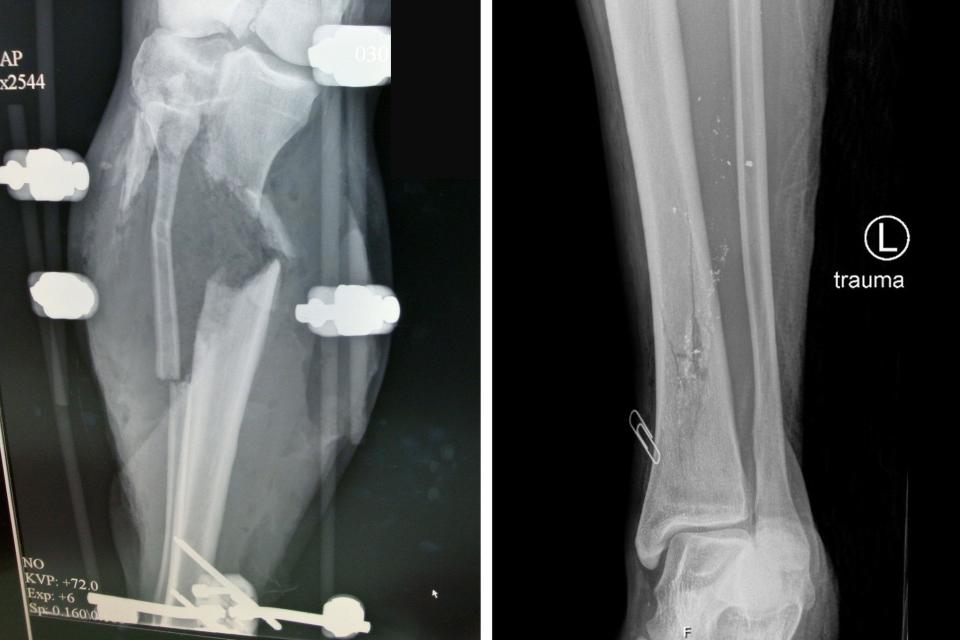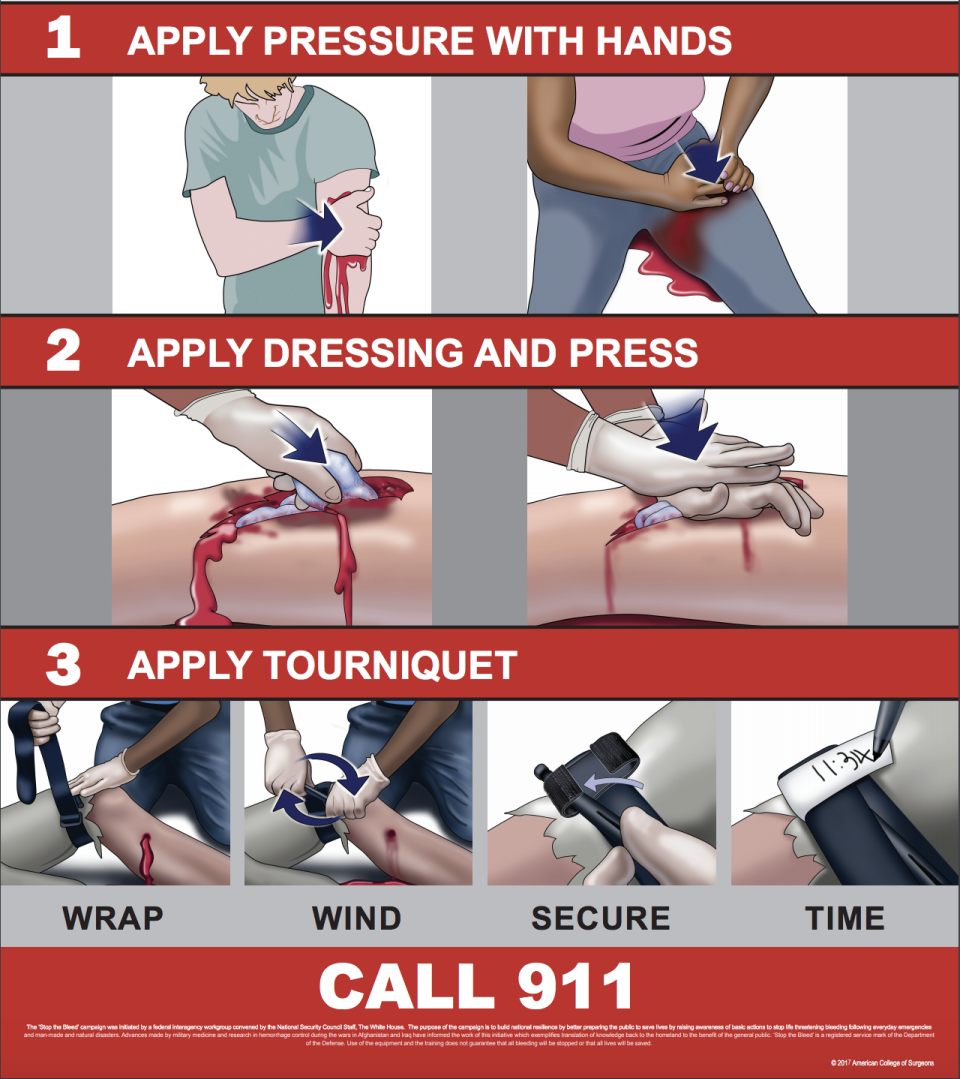Unfiltered: ‘I have never seen that many injured patients by high-velocity weapons all at once.’
“It was around noontime when all of our pages went off and we were notified that a mass shooting had occurred in Sutherland Springs, Texas,” recalls Dr. Lillian Liao, a pediatric trauma surgeon and medical director at University Hospital in San Antonio.
Moments earlier, 26-year-old gunman Devin Patrick Kelly opened fire on a packed Sunday church service using a semi-automatic rifle. Twenty-six people were killed, and 20 others were injured. “Usually in these types of situations, most people don’t survive the shooting. They’re dead on scene,” says Dr. Liao. “We had no idea how many victims would come through.”
In this third episode of “Unfiltered,” a new weekly Yahoo News interview series documenting the real, unflinching and unapologetic voices of America, we learn what it’s like for trauma surgeons to treat victims of assault rifle mass shootings.

That day, a total of nine victims, four of whom were children, were admitted to the University Hospital from Sutherland Springs where Dr. Liao and Dr. Ronald M. Stewart, the chair of the department of surgery at UT Health San Antonio, treated victims. The trauma team discerned that most of the injuries were located in or near the pelvis because the patients were sitting when the shooting occurred. “People who actually were hit any higher up were the ones that didn’t survive,” notes Dr. Liao, “because of the potential for hitting organs that bled more quickly.”
For Dr. Liao, the bodily damage caused by the high velocity weapon compared to those by a handgun were worlds apart. “Different firearms cause different types of injury when they hit the body. What we see here in this country are really wounds from a handgun, and those create a small hole. An assault rifle type injury, the speed of the bullet creates the ability to penetrate the body and destroy tissue in a way that a handgun cannot.”

According to the Bureau of Alcohol, Tobacco, Firearms and Explosives, the manufacturing of rifles has more than doubled in the past decade, with more than 4.7 million made and distributed in 2016. From the shooting at Marjory Stoneman Douglas High School in Parkland, Fla., to the massacre at Sandy Hook elementary school, AR-15-style rifles have been used in many of the recent mass shootings. The high-speed bullets they project turn sideways upon impact, causing drastic bone and tissue damage very similar to what is seen in military combat zones.
“If it hits a person in their abdomen,” Dr. Liao continues, “it could take out all of their intestines, the blood vessels in your kidney, and bones. And those people who survive these types of injuries have areas of tissue missing that we can’t replace.”
“What you see in video games or television shows don’t really give you the sense of magnitude of tissue destruction. Things are so broken that you don’t recognize the body parts that they’re supposed to look like.”
In the past, Dr. Liao had always wondered if the one thing she’s missing in her trauma training is being deployed to a war zone. Now she finds that is no longer the case: “Sadly, I don’t have to be deployed to see these devastating high-velocity firearm injuries. That’s really tragic because America, it is thought of as the dreamland. The things that we’re seeing, the epidemic of mass shooting, shouldn’t happen in this country.”
Dr. Liao believes one solution lies with bystanders. “After Sandy Hook, the American College of Surgeons and government agencies went back and looked at the children who died and the adults that died and how they died, and found that if a bystander could have slowed down or stopped the bleeding at the scene, some of those lives might have been saved.” This led to the development of the Stop the Bleed initiative, which focuses on training civilians to stem the bleeding of gunshot victims.

When the victims from the Sutherland Springs shooting were brought into the hospital, she observed that many of them had tourniquets fastened on their arms and legs to stop the bleeding. “That saved their lives,” she says.
“It’s important to develop a national trauma system where every region of the country could potentially be prepared for a devastating event such as Sandy Hook, Sutherland Springs, Las Vegas, because it will happen again: It’s just a matter of when.”


